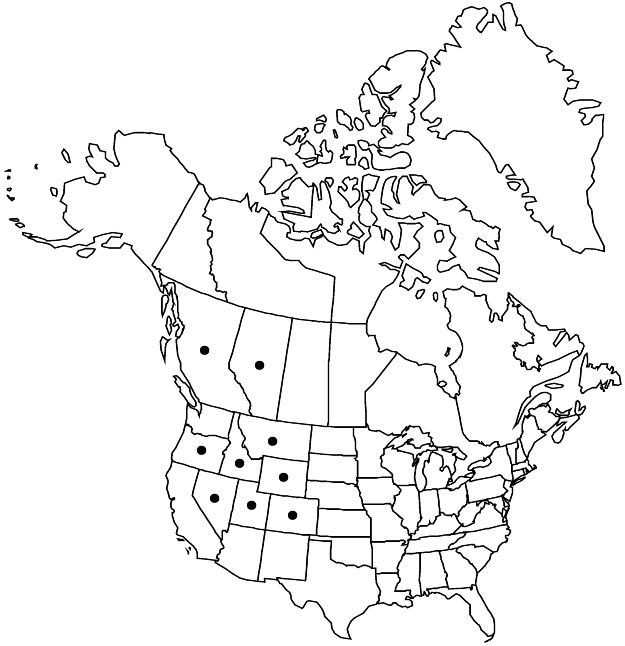Potentilla ovina var. ovina
Stems: lengths (1–) 1.5–2.5 (–3) times basal leaves. Basal leaves (1.5–) 2–8 (–10) × 0.7–2 cm; petiole (0.5–) 1–2 (–3) cm; lateral leaflets on distal 1/2 (–2/3) of leaf axis, ± overlapping, distal leaflets ± obovate, (0.3–) 0.5–1.2 (–2.5) cm, ± whole margin pinnately incised 3/4+ to midvein, teeth 4–9 (–11), linear, 2–6 (–9) × 1 mm, surfaces grayish, rarely green, hairs sparse to abundant, 1–2 mm. Achenes 1.8–2 mm.
Phenology: Flowering summer.
Habitat: Fellfields, alpine ridges, rocky slopes, dry hillsides
Elevation: 1500–3800 m
Distribution

Alta., B.C., Colo., Idaho, Mont., Nev., Oreg., Utah, Wyo.
Discussion
Typical var. ovina is a tufted, grayish plant with the leaflets divided (pinnately on distal leaflets, palmately or unevenly on proximal leaflets) nearly to the midvein into linear teeth with prominent apical hair tufts. Leaflets are often folded and closely overlapping, giving the leaves a distinctive silvery cylindric appearance especially when drought-stressed. Populations around Yellowstone National Park, in particular the type of Potentilla wyomingensis, are often larger and less hairy, with larger flowers in more open inflorescences. Some collections from southeastern Idaho and southwestern Wyoming are transitional between var. ovina and P. multisecta (sect. Concinnae); their optimal placement has yet to be determined.
The distribution of var. ovina given here largely matches that indicated by B. C. Johnston (1980), with the addition of southeastern British Columbia based on H. J. Scoggan (1978–1979, part 3). No record has been found to support the inclusion of Saskatchewan in the distribution, as done by C. L. Hitchcock and A. Cronquist (1961b). In Oregon, var. ovina occurs only as depauperate plants in the Wallowa Mountains; reports from Steens Mountain are mostly based on Potentilla versicolor. In Nevada, var. ovina is confirmed only from the Schell Creek Range, White Pine County. Not included here are collections from Alaska and Yukon that probably represent an undescribed taxon.
Selected References
None.
Lower Taxa
"thin" is not a number."dm" is not declared as a valid unit of measurement for this property."(" is not declared as a valid unit of measurement for this property."dm" is not declared as a valid unit of measurement for this property."dm" is not declared as a valid unit of measurement for this property.